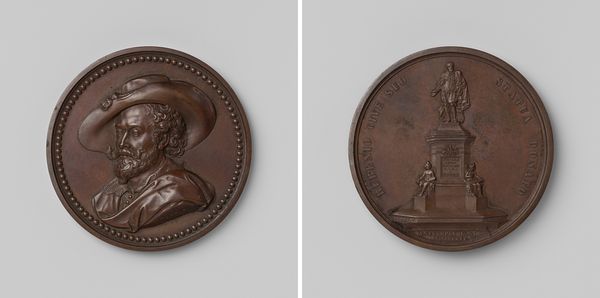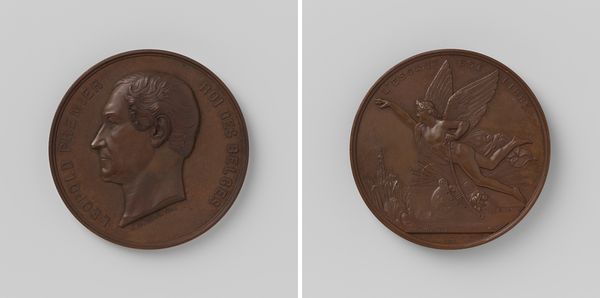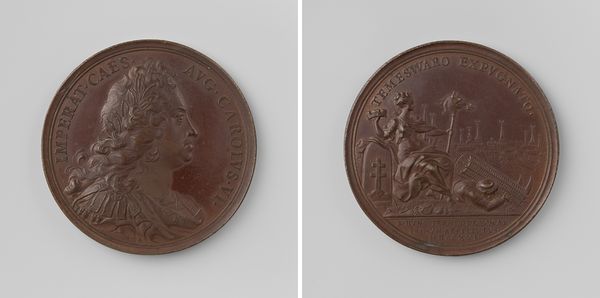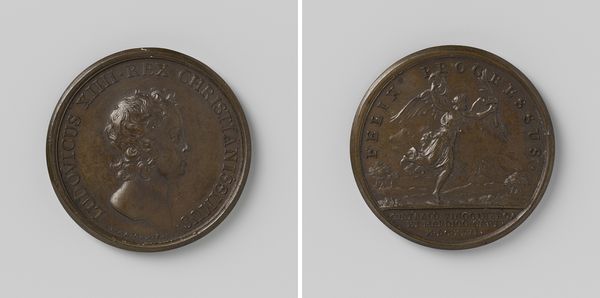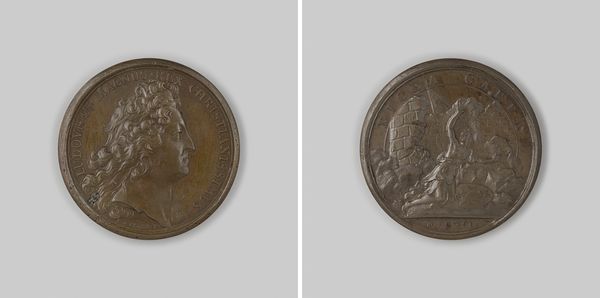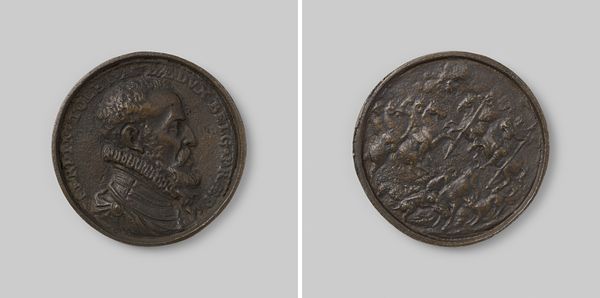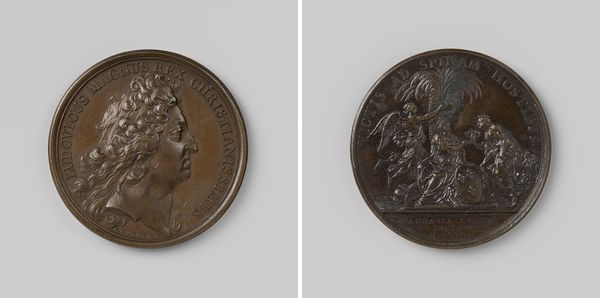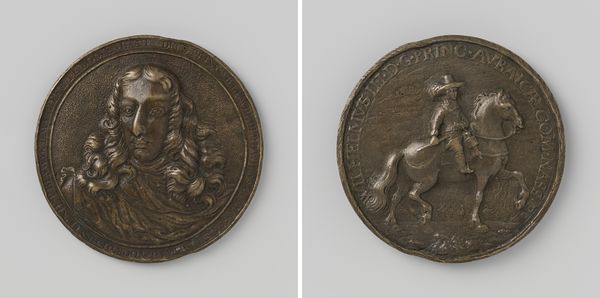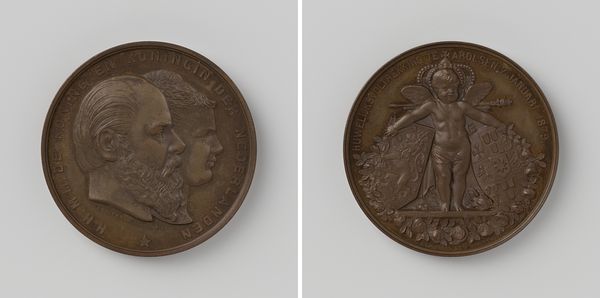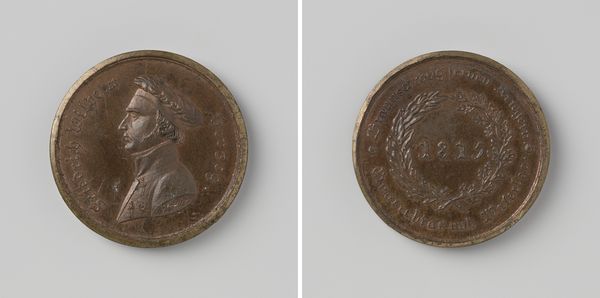
metal, relief, bronze, sculpture
#
portrait
#
metal
#
sculpture
#
relief
#
bronze
#
sculptural image
#
sculpture
#
ceramic
#
history-painting
#
academic-art
Dimensions: diameter 6 cm, weight 88.37 gr
Copyright: Rijks Museum: Open Domain
Curator: Here we have a bronze relief sculpture entitled "Terugkeer van Leopold I, koning der Belgen te Brussel," or "Return of Leopold I, King of the Belgians to Brussels," crafted in 1862 by Adolphe Jouvenel. It’s currently part of the Rijksmuseum’s collection. Editor: Immediately, the circular format combined with the dark bronze imparts a distinct sense of antiquity. It evokes a classicism tempered by the immediacy of history-painting style. Curator: Indeed, the medal-like format suggests a conscious decision to align this historical moment with the tradition of commemorating significant events. Notice the refined profile of Leopold I, crowned with a wreath. Editor: That laurel wreath certainly taps into the visual language of Roman imperial power, immediately associating Leopold with notions of victory and enduring rule. The use of bronze is also significant, reinforcing this link to the classical world, a deliberate invoking of enduring power and solidity. But tell me about the imagery on the other side of this piece. Curator: The reverse presents a scene of jubilation, capturing a moment of collective joy. There's an emphasis on dynamic movement, reflected in the raised arms and celebratory stance of the figures. They are, quite literally, caught up in the excitement of the event depicted here, frozen in time in metal relief. Editor: The symbolism here seems fairly transparent, even if the historical context is slightly obscured. We have an enthroned leader figure being greeted by joyful subjects, their adulation reinforced by the laurel wreaths. It speaks of cultural memory, a calculated invocation of legitimacy. Curator: I see it more as Jouvenel masterfully plays with positive and negative space to emphasize volume and depth in a compressed format. He used the inherent qualities of bronze to create an allegorical and historical representation in this period of celebration. Editor: Perhaps both. There is the visual component, yes, but equally, there is the narrative of leadership—and I appreciate that, for its time, this must have spoken very vividly to many about Leopold I's return. Ultimately it's a potent distillation of power dynamics through carefully chosen visual elements.
Comments
No comments
Be the first to comment and join the conversation on the ultimate creative platform.
